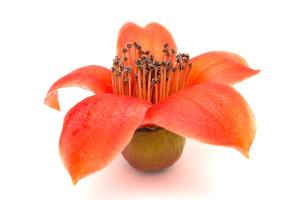Introduction
Have you ever wondered if potatoes and tomatoes are actually related? It may come as a surprise, but these two foods are, in fact, part of the same plant family. This relationship has many interesting implications, ranging from the way these plants are grown to the nutritional benefits they offer.
Understanding Plant Families
Before delving deeper into the relationship between potatoes and tomatoes, it's important to understand what a plant family is. Essentially, a plant family is a group of plants that share certain physical and genetic characteristics. These characteristics can include everything from leaf shape to reproductive structures. Within each plant family, there are many individual species, each with its own unique traits and characteristics.
The Nightshade Family
The plant family that both potatoes and tomatoes belong to is known as the nightshade family, or Solanaceae. This family includes many other popular foods, such as eggplant, peppers, and tobacco. The name "nightshade" comes from the fact that some plants in this family, such as belladonna, are poisonous and were historically used to make medications that could cause sleepiness.
The Relationship Between Potatoes and Tomatoes
So, how are potatoes and tomatoes related? They both belong to the nightshade family, which means they share many of the same physical and genetic characteristics. For example, both plants have flowers with similar structures and produce fruit that is technically a berry.
However, there are also many differences between potatoes and tomatoes. Potatoes are grown for their starchy, underground tubers, while tomatoes are grown for their juicy, red fruit. Additionally, potatoes are generally considered a staple food, while tomatoes are more commonly used as a seasoning or ingredient in dishes.
The Nutritional Benefits of Nightshades
Despite their differences, both potatoes and tomatoes offer many nutritional benefits. For example, potatoes are rich in complex carbohydrates that provide energy and fiber that aids in digestion. They also contain important vitamins and minerals, such as potassium and vitamin C, that play key roles in overall health.
Tomatoes, on the other hand, are rich in lycopene, an antioxidant that has been linked to a reduced risk of some cancers. They also contain other vitamins and minerals, such as vitamin A and potassium, and are a good source of hydrating fluids.
The Importance of Knowing Plant Families
Knowing which plant family a food belongs to can be helpful when it comes to growing, cooking, and eating it. For example, understanding that potatoes and tomatoes are part of the same plant family means that they have similar nutrient requirements and may therefore be grown in similar soils and climates. It also means that they may be used in similar dishes, such as stews or casseroles, to complement each other's flavors.
Overall, the relationship between potatoes and tomatoes highlights the importance of understanding plant families and the diverse benefits that they offer. So, next time you're enjoying a delicious tomato sauce with your baked potato, remember that these two foods are part of the same family.

 how many times do yo...
how many times do yo... how many planted tre...
how many planted tre... how many pine trees ...
how many pine trees ... how many pecan trees...
how many pecan trees... how many plants comp...
how many plants comp... how many plants can ...
how many plants can ... how many plants and ...
how many plants and ... how many pepper plan...
how many pepper plan...





























